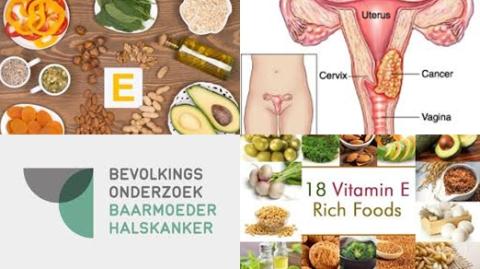
Objectives:
Several epidemiological studies have suggested that vitamin E could reduce the risk of uterine cervical neoplasm. However, controversial data were presented by different reports. Therefore, this review article (meta-analysis) has been conducted.
Do both high vitamin E intake and circulating vitamin E levels reduce risk of uterine cervical neoplasm?
Study design:
This review article included 15 case-control studies, involving 3,741 cases (those with uterine cervical neoplasm) and 6,328 controls (those without uterine cervical neoplasm).
There was no obvious publication bias.
Results and conclusions:
The investigators found in pooled analysis that the highest intake of vitamin E significantly reduced risk of cervical neoplasia with 42% [OR = 0.58, 95% CI = 0.47-0.72, I2 = 83%]. In addition, both vitamin E intake and blood levels of vitamin E were negatively correlated with cervical neoplasia risk.
The investigators found in subgroup analysis that the highest intake of dietary vitamin E significantly reduced risk of cervical neoplasia with 32% [OR = 0.68, 95% CI = 0.49-0.94, I2 = 70%].
The investigators found in subgroup analysis that the highest vitamin E blood levels significantly reduced risk of cervical neoplasia with 48% [OR = 0.52, 95% CI = 0.40-0.69, I2 = 86%].
The investigators found in subgroup analysis that vitamin E significantly reduced risk of cervical neoplasia with 40% [OR = 0.60, 95% CI = 0.45-0.78, I2 = 84%] in studies conducted in America and Europe.
The investigators found in subgroup analysis that the highest intake of vitamin E significantly reduced risk of cervical neoplasia with 46% [OR = 0.54, 95% CI = 0.39-0.76, I2 = 75%] in studies conducted in Asia.
The investigators found subgroup analysis stratified by different types of cervical neoplasm indicated that the highest intake (or serum level) of vitamin E significantly decreased risk of cervical cancer with 47% [OR = 0.53, 95% CI = 0.390.73, I2 = 77%] and cervical intraepithelial neoplasia (CIN) with 46% [OR = 0.54, 95% CI = 0.43-0.70, I2 = 79%]. Meanwhile, sensitivity analysis to assess the influence of each single study on the pooled ORs by omitting a research in each turn, showed combined ORs were not substantially different, indicating that the results of this meta-analysis were stable and reliable.
The investigators concluded that both vitamin E intake and circulating vitamin E levels could reduce cervical neoplasia risk, including cervical cancer and cervical intraepithelial neoplasia. In other words, sufficient supplementation of vitamin E might reduce the risk of cervical neoplasia. However, more randomized controlled trials and cohort studies with high quality are required to further validate this inverse relationship.
Original title:
Effect of vitamin E supplementation on uterine cervical neoplasm: A meta-analysis of case-control studies by Hu X, Li S, [...], Zhu X.
Link:
https://www.ncbi.nlm.nih.gov/pmc/articles/PMC5567498/
Additional information of El Mondo:
Find more information/studies on vitamin E, randomized controlled trials/cohort studies/subgroup analysis and cancer right here.
Higher intake of vitamin E is an intake which covers the recommended daily allowance of vitamin E of at least 1 day.